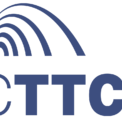
Luis Blanco
Bilateral Meetings
- 02.03.2015 Monday (11.00h - 13.05h)
- 02.03.2015 Monday (15.10h - 18.05h)
- 03.03.2015 Tuesday (9.00h - 11.05h)
- 03.03.2015 Tuesday (11.05h - 13.10h)
- 03.03.2015 Tuesday (13.10h - 15.15h)
- 03.03.2015 Tuesday (15.15h - 16.55h)
- 04.03.2015 Wednesday (9.00h - 11.05h)
CTTC is organized in four divisions:
Communication Networks Division (CND)
CND aims at optimizing the network infrastructure end-to-end. This includes core, metro, and access, optical and wireless, transport and aggregation, fixed and mobile networks. Its research not only includes theoretical research, but also moves to a more practical stage by developing complete simulation frameworks and testbeds with the goal of transferring the technology to industry.
Communication Systems Division (CSD)
CSD activities are aligned with the following fields: communication theory, advanced signal and information processing, and radio resource management and intelligence in wireless networks. Its activities concern the next areas of technology: future cellular communications (LTE and beyond), large-scale communication, power line communications, positioning technologies, navigation systems and satellite communications.
Communication Technologies Division (CTD)
CTD aims to address the research to the most endeavoring challenges that future communications technologies will face: those of energy and bandwidth efficiency. CTD research has a strong experimental emphasis, achieved through the use of demonstrators and testbeds, and the focus is on component (subsystem) level and also on PHY and MAC layers.
Geomatics
This division deals with the study, acquisition, storage, organization, analysis, dissemination, management and use of geographically-referenced spatial information. Geomatic disciplines include, among others, cartography, photogrammetry, remote sensing, sensor calibration and orientation, geodesy, topography, geographic information systems, civil engineering and geomatic engineering.
HARDWARE
- Antennas, aerial, masts and towers
- Backhaul solutions
- Core network equipment
- Femtocells
- IP networking equipment
- M2M
- Modems
- Test and measurement equipment
SOFTWARE/INTERNET
- Network operating software
- VOIP Systems
SERVICES/OTHERS
- Network Management
- Systems integration
Visible Light Communications (VLC) – SILenCe: First solution IEEE 802.15.7 compliant
Visible light Communications (VLC) is an emerging field in wireless communications. Modern illumination systems are based on LEDs which can be used to illuminate and to transmit data. The number of applications of this new technology is wide and includes, among others, the following applications: indoor location, mobile apps (QR codes, applications, augmented reality, etc.), toys and entertainment devices, underwater communications, light commerce and communications within special environments (e.g. hospitals, etc.).
SILenCe, developed by CTTC, is the first solution compliant with IEEE 802.15.7 standard (PHY I and PHY II). This tool allows a rapid prototyping of standard compliant VLC system which provides short time-to-market figures.
- Technical co-operation
- License agreement
- Investment/Financing
VLC-based indoor positioning
Wireless location and broadcast advertisement based on comercial LEDs. This product is based on Visible Light Communications (VLC) in real lighting systems. It supports the following features: indoor positioning and data transmission.
- License agreement
- Technical co-operation
- Investment/Financing
STRAUSS - Software defined network and optical network virtualization
STRAUSS is the first ICT research project in the field of optical
communications and networks between Europe and Japan funded by the European Commission’s FP7, and the Japanese Ministry of Internal Affairs and Communications (MIC), and the National Institute of Information and Communications Technology (NICT). It aims to define a highly efficient and global (multi-domain) optical infrastructure for Ethernet transport, covering heterogeneous transport and network control plane technologies, enabling an Ethernet ecosystem. The STRAUSS project will design, implement and evaluate, via large-scale demonstrations, an advanced optical Ethernet transport architecture. The proposed architecture leverages on software defined networking principles, multi-domain network orchestration, optical network virtualization as well as on flexible optical circuit and packet switching technologies beyond 100 Gbps.
- License agreement
- Technical co-operation
- Investment/Financing
5GPPP - DEMO
Demo 5G Strauss
- License agreement
- Technical co-operation
- Investment/Financing
R&D results ready for the industry
Outsatnding results from R&D projects in different TRL levels ready to be used